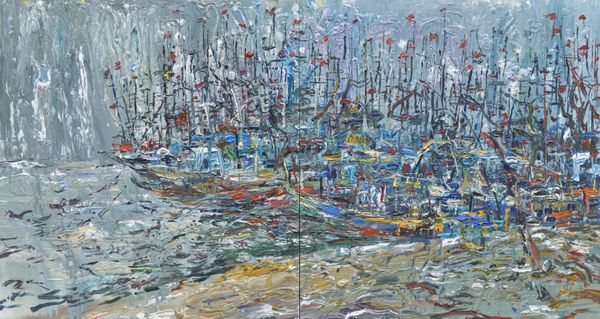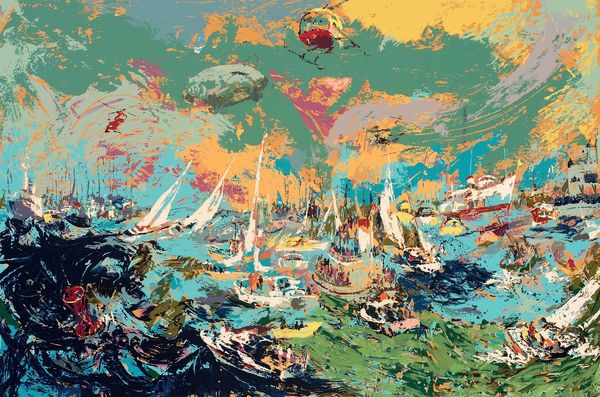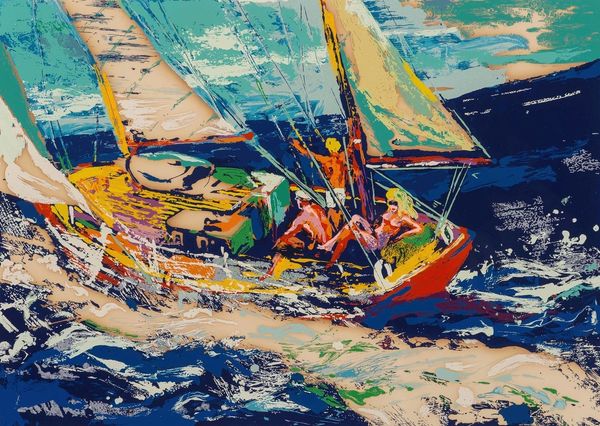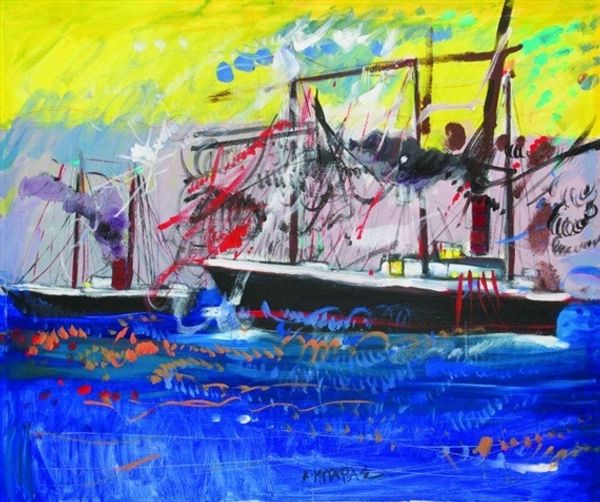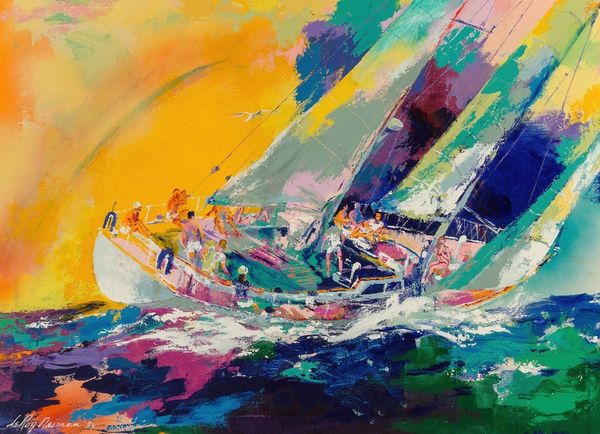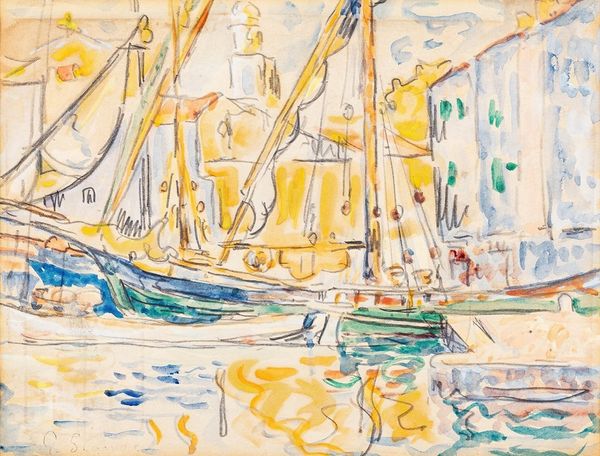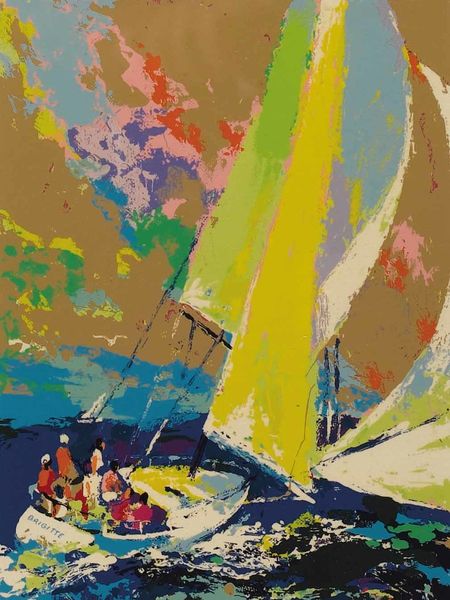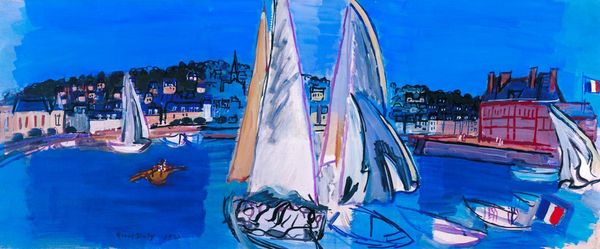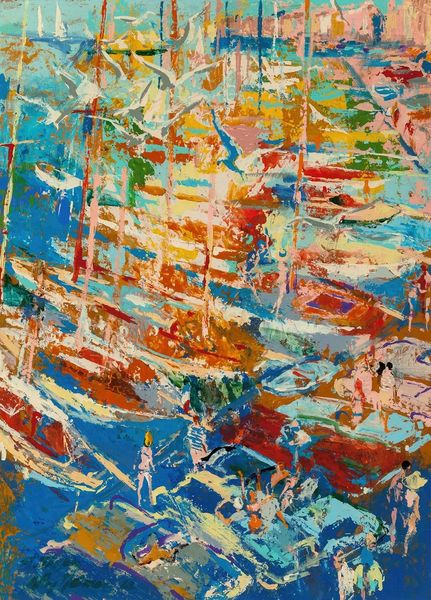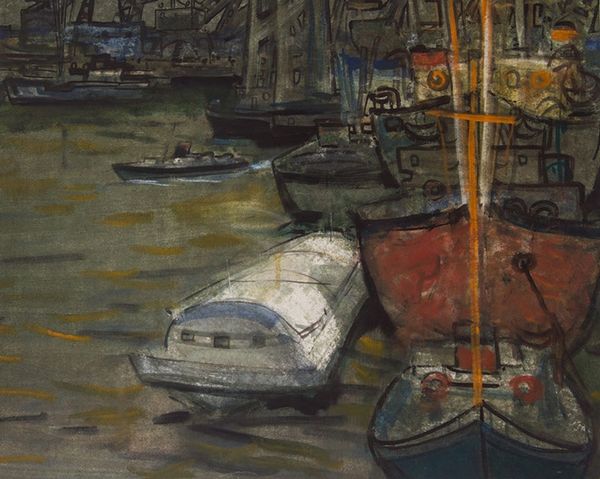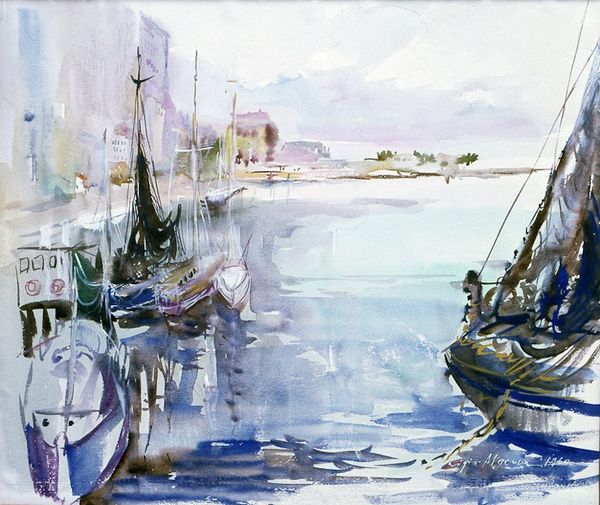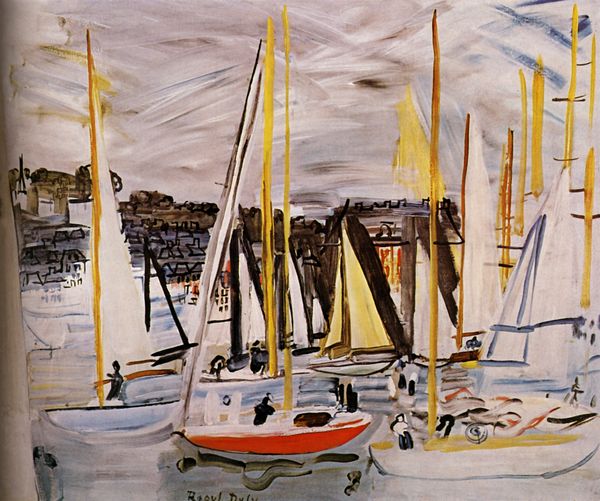
Copyright: Modern Artists: Artvee
Curator: The work before us is "Harbor at Monaco" by LeRoy Neiman, created in 1988 using oil paint. Its bright colors are instantly striking. Editor: Yes, instantly evokes the sensory overload of wealth and leisure. The composition, too, feels purposefully crammed—a visual cacophony, wouldn't you say? Curator: The high-keyed palette definitely amplifies the atmosphere of lavishness and vibrancy. Consider the layering of forms—the yachts in the harbor, the bustling promenade, and the monolithic mountains providing a dramatic backdrop. Neiman captures the essence of Monaco's density. Editor: I'm interested in that "essence." Beyond pure aesthetics, Neiman positions Monaco as this postwar playground for the elite. Look at the casual figures on deck; it's as if the spectacle is just everyday life for them. It's a kind of performance, and Neiman documents it. Curator: You read this as documentation, but could we not also view this application of dynamic brushstrokes as expressionist gestures to portray energy of the location? The composition feels almost secondary to the emotional response elicited through this rapid execution. Editor: Well, technique always serves a larger purpose. That rapid execution reinforces the transient nature of these social settings. Celebrities and wealth—fleeting moments, eternally frozen by Neiman, then sold. It’s a cultural commentary hidden within apparent celebration. Curator: Perhaps. I still lean towards Neiman's intent being the sheer distillation of sensation. However, looking through a critical and cultural lens brings more levels of reading of his style, especially in conveying messages of social hierarchies within its materiality and chromatic choices. Editor: Indeed, an image doesn't just "show"; it speaks. And understanding those social and cultural connotations enriches the meaning. Thank you for the stimulating analysis. Curator: And you, for providing additional context to further extrapolate our perceptions of color, and application.
Comments
No comments
Be the first to comment and join the conversation on the ultimate creative platform.
